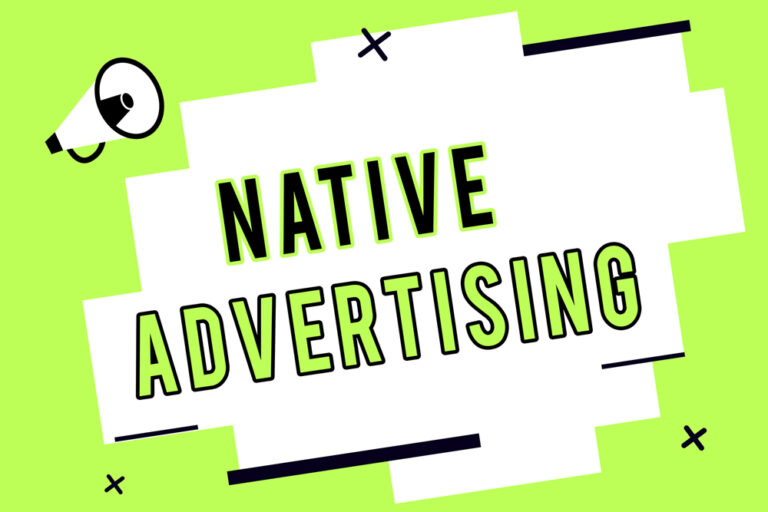Tagline vs. Slogan: What’s the Difference and Why Are They Important?

In today’s competitive marketplace, the power of words in branding and advertising can’t be overstated. Taglines and slogans are two critical tools in a marketer’s arsenal, each serving a unique purpose in the brand’s strategy. Understanding the nuances between a tagline and a slogan is essential for crafting messages that resonate with consumers and drive brand loyalty.
What Is a Tagline?
A tagline is a memorable phrase that represents the essence of a brand or company. It encapsulates the brand’s identity, values, and promises in a succinct and catchy way, often becoming synonymous with the brand itself. Unlike slogans, which can change with marketing campaigns, a tagline is more permanent, aiming to leave a lasting impression on the audience. It’s the voice of the brand in a crowded marketplace, helping to differentiate it from competitors by conveying its unique selling points in just a few words.
Why Is a Tagline Important?
Taglines play a crucial role in branding and marketing strategies for several reasons. They serve as a powerful tool to convey the essence of a brand succinctly and memorably. By encapsulating the brand’s identity and values, taglines help to create a strong brand image that resonates with the target audience. They aid in differentiating the brand from competitors by highlighting unique selling points in a crowded market. Furthermore, taglines help to build emotional connections with customers, making the brand more relatable and appealing. This emotional connection can drive customer loyalty and influence purchasing decisions. Lastly, a well-crafted tagline can enhance brand recall, making it easier for customers to remember and recognize the brand across various platforms. Essentially, taglines are vital for effective branding and marketing, contributing to a brand’s success and longevity.
Examples of Taglines
Throughout the years, several taglines have become iconic, almost as famous as the brands they represent. Here are some examples that have left a lasting impact on their audience:
- Nike: “Just Do It” – This simple yet powerful tagline motivates people to push beyond their limits.
- Apple: “Think Different” – This tagline encourages innovation and thinking outside the box, mirroring Apple’s approach to technology.
- McDonald’s: “I’m Lovin’ It” – A tagline that evokes feelings of happiness and satisfaction associated with their meals.
- Coca-Cola: “Taste the Feeling” – It ties the experience of drinking Coca-Cola with memorable, emotional experiences.
- L’Oréal: “Because You’re Worth It” – This tagline empowers individuality and self-worth, particularly resonating with its beauty product users.
These examples illustrate how a well-crafted tagline can encapsulate a brand’s essence and values, creating a memorable identity that positively influences consumer behavior.
What Is a Slogan?
A slogan is a short, catchy phrase used in marketing campaigns to convey the objectives, benefits, or appeals of a product or service. Unlike taglines, which are enduring and represent the overall brand, slogans are often adaptable and can change to reflect current marketing strategies or themes. They play a critical role in advertisements and promotional material, aiming to influence consumers’ perceptions and actions towards the product or service being marketed. Slogans are designed to be memorable and persuasive, making them a vital element in creating effective marketing communications.
Why Is a Slogan Important?
Slogans are important for several reasons, primarily in the role they play in marketing and advertising campaigns. They are powerful tools that help in capturing the attention of the target audience effectively. By condensing a product’s appeal, feature, or the company’s message into a brief, memorable phrase, slogans facilitate better recall among consumers. This recall can significantly boost brand recognition, distinguishing it from competitors in a crowded market.
Furthermore, slogans can influence consumer behavior by emphasizing the benefits or unique selling propositions of a product or service, thereby encouraging the audience to take action. By resonating with the consumers’ needs, wants, or feelings, slogans also help in building an emotional connection, which can lead to increased brand loyalty. Additionally, in a world where consumers are bombarded with information, a well-crafted slogan can cut through the noise and deliver a message that sticks, making it an indispensable component of successful marketing strategies.
Example of Slogans
Many slogans have successfully penetrated the public consciousness, often becoming part of the lexicon. Here are examples that illustrate the effectiveness of well-conceived slogans in marketing:
- KFC: “Finger Lickin’ Good” – This slogan conveys the irresistible taste of their food, making it memorable.
- Audi: “Vorsprung durch Technik” – Translating to “Advancement through Technology,” this slogan underscores Audi’s commitment to innovation.
- De Beers: “A Diamond is Forever” – This timeless slogan has helped solidify diamonds as the preferred choice for engagement rings and romantic gifts.
- MasterCard: “There are some things money can’t buy. For everything else, there’s MasterCard” – This slogan encapsulates the brand’s value proposition in an emotionally resonant way.
- Red Bull: “Gives You Wings” – It suggests the energy drink can uplift one’s physical and mental state.
These slogans are not just phrases; they are strategic marketing tools that have played significant roles in defining the brands they represent and influencing consumer behavior.
Differences Between Taglines and Slogans
The distinction between taglines and slogans, while subtle, is significant in the realms of marketing and brand identity. Understanding these differences aids businesses in employing them effectively to enhance brand recognition and consumer engagement.
Purpose
Taglines are designed to encapsulate the essence and identity of a brand or company, conveying its overall brand message in a few memorable words. They are reflective of the brand’s mission, values, or what it stands for, intending to leave a lasting impression on the audience. On the other hand, slogans are campaign-specific phrases used in advertising and marketing to highlight the benefits or features of a product or service, aiming to persuade and motivate the audience to take actionable steps.
Word Count
While there is no strict rule on the number of words, taglines tend to be shorter and more succinct compared to slogans. A tagline is usually a brief phrase that effortlessly sticks in the consumer’s mind, making it easy to remember and recognize. Slogans, while still concise, might be slightly longer to include specific details about a product, service, or campaign that it is promoting.
Duration Implemented
Taglines are intended to be long-lasting, often remaining the same for years or even the entire lifespan of the brand. They provide a consistent message that reinforces the brand’s identity across all platforms and marketing materials. Slogans, in contrast, are more flexible and changeable, adapting to different marketing campaigns, product launches, or promotional strategies. They might change from one campaign to the next, reflecting the current marketing focus.
Development Stages
The development of a tagline usually occurs in the early stages of brand formation, as it is integral to establishing the brand’s identity. Crafting a tagline involves deep reflection on the brand’s core values, mission, and the message it wants to convey to its audience. Slogans, conversely, are developed as part of specific marketing campaigns and are tailored to promote particular aspects of the brand’s offerings. Slogan development requires understanding the campaign’s objectives, the target audience, and the key messages that need to be communicated to achieve the campaign’s goals.
Conclusion
Both taglines and slogans are instrumental in shaping the perception and success of a brand. While they may seem similar at first glance, their distinct purposes, usage, and lifespans highlight their unique roles in marketing and brand strategy. A tagline’s enduring nature builds the foundational brand identity, aiming for long-term brand resonance with the audience. In contrast, slogans offer the flexibility to communicate the specific benefits and features of products or campaigns, adapting to the changing dynamics of the market. To leverage these tools effectively, it’s crucial for marketers to deeply understand their brand, audience, and the specific goals they aim to achieve. In the end, the careful crafting and strategic implementation of taglines and slogans can significantly enhance a brand’s visibility, recall, and overall success in a crowded marketplace.






